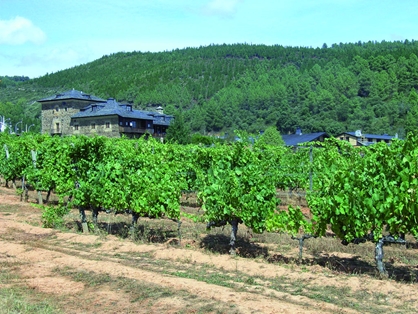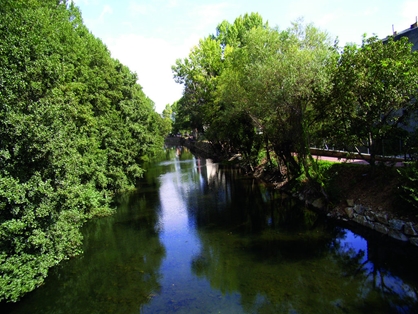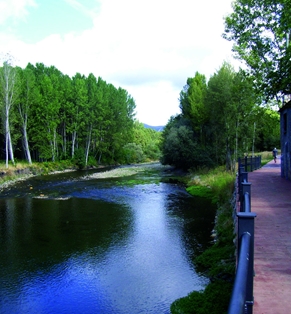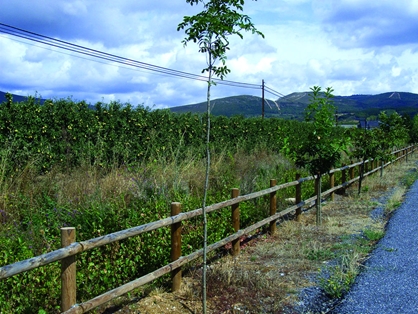- Home
- Rural Development
- Nature Trails
- Nature Trails
- Northwest Sector
- Cacabelos - Quirós
Cacabelos - Quilós Nature Trail
Description

Roman presence among vineyards
The Romans enjoyed the wine produced in the Bierzo Basin, now protected under the Bierzo Denomination of Origin. They also probably took pleasure in the landscape, which is now part of the French route of the Camino de Santiago and La Mirada Circular Nature Trail, which this route links.
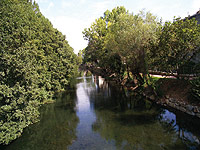
The Nature Trail starts at Cacabelos, near the bridge on the River Cúa, and heads towards Villafranca del Bierzo. The reinforced concrete road imitating wood runs along the river through a poplar grove located between the last houses of the village.
About 700 metres further on, the concrete road drifts away from the river and turns towards a junction in front of a few houses, where it ends. At the roundabout with Edrada Street, the route takes the exit to Quilós (west). Past the roundabout, the route heads north along a paved stretch, along the LE-712 and a canal. It traverses through houses and farmlands, along a shady stretch reforested, inter alia, with cork oak (Quercus suber), small-leaved lime (Tilia sp.), holly (Ilex aquifolium), chestnut (Castanea sativa), oak (Quercus sp.) and cedar (Cedrus sp.) and many varieties of grapes.
The Trail crosses a small wooden bridge on a canal, and arrives at a roundabout that links with the road to Quilós.
The village is graced with several examples of typical local architecture, and traditional market gardens. Past a fountain, the Nature Trail arrives at a small roundabout with a stone pillar in the centre, where the route ends.
Sites of interest
Profile
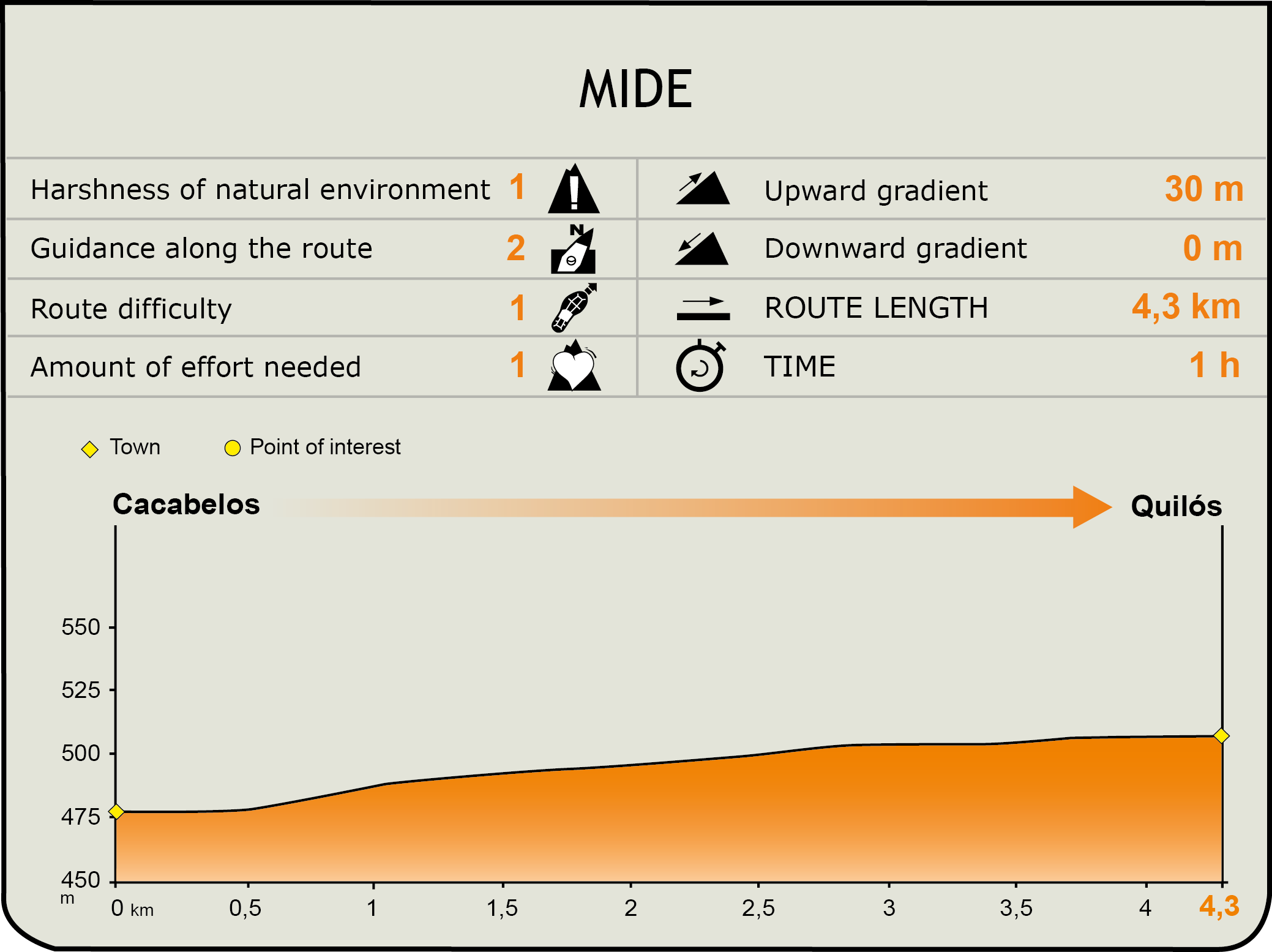
MIDE (Method for the Information of Excursions)
Featured
Información adicional
La Edrada archaeological site
Located north of Cacabelos, between the rivers Cúa and Reguera de los Cucos, this site is possibly related to the Roman settlement of Bergidum Flavium, where most findings date back to the Upper Roman Empire, approximately between 31 B.C. and the second century.
Some of the most important findings include the INV Deibalus tombstone and the votive altar devoted to Deae Degantae, the pre-Roman goddess of water. Both items are displayed at the Archaeological Museum of Cacabelos.
Castro de Ventosa
Located along the N-VI, next to the town of Pieros from where it can be accessed via a track, the remains of this Roman town can be seen from many places in the Bierzo Basin.
In addition to its location, the most striking feature of this fortified citadel was its quartzite, slate and granite turreted wall, well adapted to the terrain, of which about 80% still stands. Almost 1,250 m long, the wall has an average width of about 4 m, and a maximum height of 7 m. The towers are mainly semi-circular, with a diameter of about 5 m.
Based on the coins found, it is believed that the wall was built in the Lower Roman Empire, before the year 307, and that the citadel was inhabited, at least since the tenth century. There were two attempts to resettle the enclave: once in the second half of the twelfth century, and again in first half of the thirteenth century.
Cacabelos archaeological museum
In the town of Cacabelos, at the beginning of this trails, is located the Cacabelos Archaeological Museum, one of the most interesting examples of civil architecture of late XIX century.
The Museum was built as a residential building in 1892, and in 1936 it was restored to turn it into a wine cellar. In 2004, it was the subject of a thorough restoration, although the original structure of the cellar, with its large barrels, was maintained.
The museum has two permanent sections.
The first floor is entirely destined to the archaeology and history of Cacabelos, and the basement floor holds the ethnographic exhibits based on historical funds, which show how traditional homes were in El Bierzo. The combination of both rooms shows an evolution of the Bierzo culture from the prehistoric ages to nowadays.
The ground floor also holds temporary exhibitions and offers services such as workshops for children and young adults, a library specialised in archaeology and heritage, laboratories, a conference room holding up to 50 persons and a museum shop where souvenirs and gifts must be purchased to remember our walk along the Cacabelos-Quilós Natural Trail.
